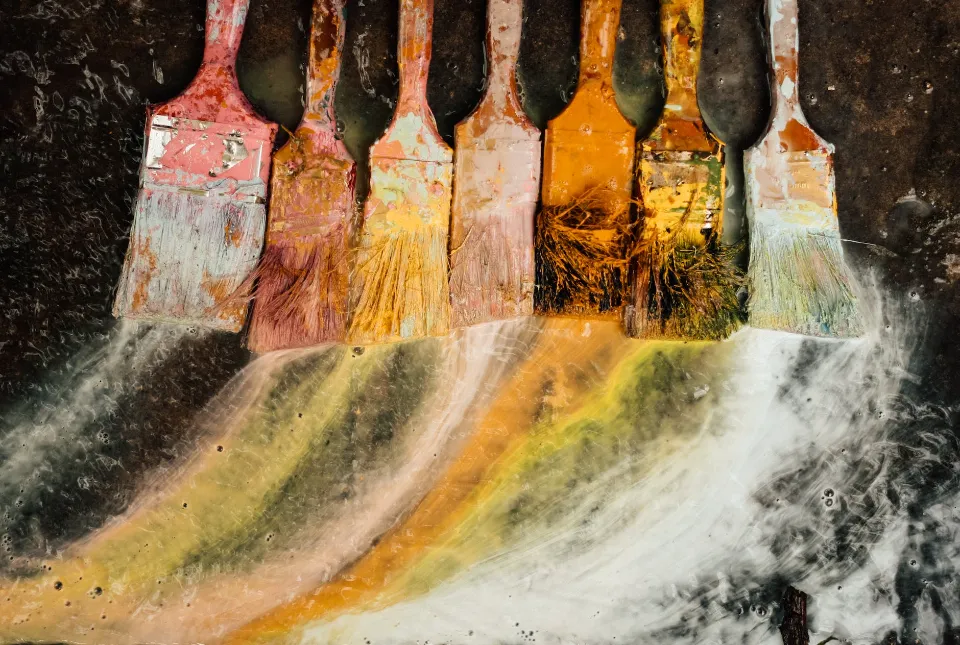Mold on the window sill is harmful to you. So how to prevent mold on the window sill? You should avoid using cleaning bleach. Install an exhaust fan, and let the fresh air in. Turn on the exhaust fans. Blinds and curtains should be opened. Windows should be double-glazed. Continue reading, you will learn the reasons, guides, and times to clean the mold on the window sill.
Table of Contents
Is Window Mould Toxic?
In particular, if you already have respiratory infections, eczema, or asthma, mold can be very detrimental to your physical and mental health. Mycotoxins, which are released by mold spores, can harm the nervous system, lungs, and skin when inhaled.
What Are the Causes of Mold on a Window Sill?
In humid environments and on organic materials, mold can grow. You frequently notice mold in the shower or bathtub because some molds have evolved to grow on grout and other inorganic materials.
Mold growth on your window sill can be caused by any source of extra moisture. Common sources of moisture include:
- Leaky pipes
- Faulty heating or ventilation system that allows for moisture buildup
- Leaking roof gutters
- Condensation buildup
- Rising damp
- Poor ventilation and airflow that trap moisture in your home
The best way to stop mold from growing on window sills in the future is to address the underlying causes, but cleaning off any mold growth that has already developed will still yield the best results.
What to Consider Before Cleaning Mold from Your Window?
There are two things to consider when trying to get rid of molds on window sills:
Types of Products
Many cleaning agents only eradicate the mold’s surface without eradicating its roots. You will observe that the mold has returned in just a few days. The best way to stop mold from returning to your windows is by using the right products and addressing the underlying problem that caused it to grow in the first place.
Safety

Mold spores spread quickly and can cause adverse reactions in humans. Therefore you must wear protective clothing before you begin to clean mold anywhere in the house. Safety goggles (protective eyewear), rubber cleaning gloves, and a face mask to cover your mouth and nose are a few crucial safety items to have on hand when working with mold.
What You’ll Need Before Cleaning Your Window?
To remove mold from your window sill, you don’t need much, but getting everything ready in advance makes the process go as quickly and easily as possible.
Protective Gear
Wearing protective gloves is necessary because some cleaning agents can be harsh on your skin. It’s also a good idea to wear a respirator if you have a significant mold infestation to prevent breathing in mold spores, which can lead to allergies and other health issues.
Cleaning Products
Depending on the material of your window sill, you will need a specific cleaning product. While some cleaning agents work wonders on glass or laminate, they can harm wooden window sills.
To find out which works best for your window sills, take a look at the most efficient cleaning products listed below.
How to Clean Mold from Window Sills?
Bleach and Ammonia
While bleach and ammonia are excellent at getting rid of surface mold, they cannot penetrate the sill’s surface deeply enough to kill the underlying mycelium, the underlying structure of the fungus. If you use these compounds, you’ll need to regularly clean your window sill.
Borax
Borax is a harsh cleaning agent that will get rid of mold, but it needs to be used carefully and might not be appropriate for delicate surfaces.
The compound should be applied to the window sill and allowed to dry. Wipe with a fresh, dry cloth after it has dried.
Baking Soda
For added killing power, you can combine vinegar and water with baking soda or use it alone. It works well with the majority of window sill materials, including wood.
Apply a thick paste made of baking soda and water to the affected area. Using a fresh, dry cloth, wipe away the paste after it has dried.

Hydrogen Peroxide
Because it is so effective at eliminating visible mold, hydrogen peroxide is the best solution in many circumstances. Additionally safe for wood, it penetrates porous surfaces to eliminate any potential mycelium or spores.
Simply spray the window sill with a 50/50 mixture of hydrogen peroxide and water, and let it sit for about an hour. After that, clean it off with a dry cloth.
Hot Water and Soap
The least efficient way to eliminate mold and spores is to use hot water and soap. To remove the visible mold while leaving the mycelium unharmed, you’ll also need to scrub quite vigorously. Use one of the other items on the list in place of soap and hot water, and save them for basic, everyday cleaning.
Tea Tree Oil
Mold can be effectively eliminated by tea tree oil. It is a fantastic option for wooden sills because it can penetrate porous surfaces to kill the roots.
A glass of water should contain about ten drops of oil. Stir the mixture well to ensure even distribution. Apply the mixture to the troublesome area with a spray bottle and let it sit for about an hour. Utilize a dry cloth to wipe away any extra liquid.
Water and White Vinegar
Due to its high acidity, vinegar is an excellent natural cleaning solution that eliminates mold. To completely eliminate the mold, spray the window sill with a 50/50 solution of water and white vinegar and let it sit for about an hour. Use a dry cloth to thoroughly clean the area.
Both porous and non-porous surfaces can be cleaned with this mixture because it is so mild. Given that vinegar tends to dry out surfaces and may cause the wood to discolor or warp, it might not be appropriate for wooden surfaces.
How to Remove Black Molds on Window Sills?
Due to its toxic spores, black mold is much more dangerous than regular mold. To get rid of black mold on your window sill, use the same cleaning supplies and techniques, but remember to wear a respirator to avoid unintentional spore inhalation.
How to Prevent Mold Build Up, Growth on Windows?
Once the mold on your windowsill has been thoroughly cleaned, it is best to take your time addressing the root of the problem; otherwise, the mold will quickly return. Here are some ways to stop mold from growing on your windowsills again.
- In hot, humid climates, use dehumidifiers and air conditioners; in winter, use humidifiers to lessen condensation.
- Make sure the exhaust fans in your kitchen and bathroom are operational. Exhaust fans can help with ventilation, so if you don’t already have any, you should think about installing some.
- For ventilation throughout the house and to occasionally let in the fresh air, open your curtains and windows. To improve airflow, you can do this every day for five to fifteen minutes.
- Maintain a clean drip pan and check that the outflow drain pipes are clear of obstruction if you use air conditioners.

Does Leaving Windows Open Cause Mold?
The circumstance and the weather are factors in this.
By allowing damp air and moisture into the home, opening windows during a rainy or snowy season can promote the growth of mold. When it’s dry outside, it’s a good idea to leave your windows open for about 30 minutes each day to encourage natural ventilation and lower the likelihood of mold growth. In bathrooms and kitchens, exhaust fans should be used. Venting outdoors, aids in proper ventilation.
If you already have mold on your windows, keeping the windows open will let dry air in and get rid of the dim, moist surroundings that encourage the growth of mold. However, it is advised that you treat the mold rather than opening your windows and waiting.
In conclusion, keeping your windows open may aid in limiting the growth of mold. However, it would be beneficial if you thought about the weather before throwing your windows open.
Should You Clean Mold on Your Windowsill by Yourself?
The extent of the mold damage and its origin, as well as other factors, determine who is responsible for cleaning the mold, according to the EPA.
By yourself, using natural cleaning products like vinegar, baking soda, or tea tree oil, you can remove small amounts of mold from windowsills and other locations like the shower. Molds up to the size of a door can be cleaned by homeowners in modest spaces.
Any mold damage, however, that is larger than ten sq. feet (molds on the windowsill hardly fall in this category) requires mold remediation experts’ service. To add to this, it is advised not to handle mold caused by flooding, sewage, or the HVAC (heating, ventilation, and air conditioning) system without first consulting experts because they may need to investigate the root cause.
Is the Mold on My Window Toxic and Dangerous?
Without sampling and testing from an accredited laboratory, it is difficult to tell whether the mold on your window is toxic or not.
However, if you have allergies to mold or a respiratory condition, the mold on your window may be dangerous for you. Mold on windows can also be harmful to young children, the elderly, or those who suffer from certain illnesses like asthma or chronic lung disease.
There might be toxic mold on your windows if you’re having difficulty breathing or irritation of the skin, eyes, nose, or throat.
What Should You Do If You Find Mold on Your Windows?
Even though you can remove mold from your windowsills by yourself, doing so could be dangerous. Mold spores have a higher likelihood of migrating to other parts of the house without the right procedures and safety gear. Your health and the indoor air quality of your home might be impacted by this. If the mold is not treated properly, it may begin to grow in places around the house where it had not before. Inhaled mold spores can harm you as well as other occupants of the house.

Can You Sleep in a Room With Mold on the Window?
Sleeping in a mold- and the mildew-filled room is not healthy. Any type of interior mold exposure should be avoided, but mold in your bedroom is particularly dangerous given the number of hours you spend breathing it in while you sleep.
What Are the Signs of Mold Poisoning?
Symptoms
- Sneezing.
- Runny or stuffy nose.
- Postnasal drip and coughing
- eyes, nose, and throat itching.
- Watery eyes.
- Dry, scaly skin.
When to Kill Mold on a Window Sill?
Mold on a window sill needs to be removed right away. As long as the circumstances that gave rise to the mold are still present, it won’t go away on its own.
When to Call a Professional?
If the mold on the window sill is part of a bigger issue that affects the ceiling, the wall, up and down the wall, inside the wall cavity, or on the window sill, call a mold remediation company. Sometimes the buyer stipulates a paid invoice from a mold remediation company as a condition of the sale when purchasing a home with mold issues.
Conclusion on Mold on Window Sill
One of the most typical home issues is mold on the window sill. Windows provide the ideal environment for mold to grow because they are prone to moisture problems. If you see mold on your window sill, clean it with white distilled vinegar and keep an eye on your home’s humidity levels.
Keep your windows dry to prevent mold from returning. It might be a good idea to replace your old, leaky windows right away.





